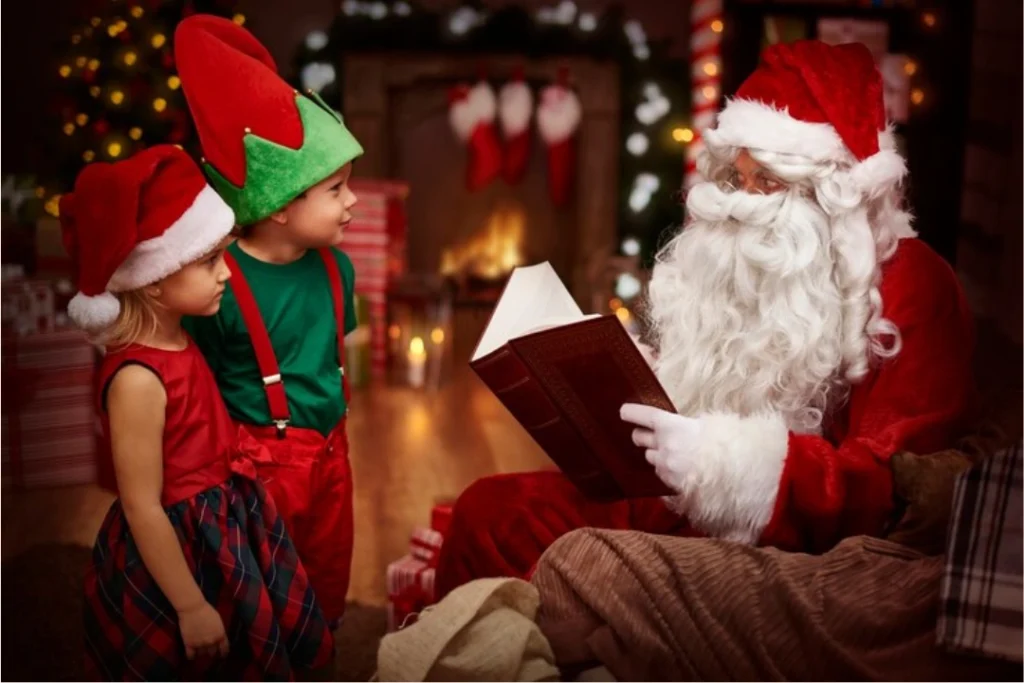Is Santa Real? Unwrapping the Truth Behind the Myth
Every year, children across the world write letters, hang stockings, and wait for Santa Claus. But many parents eventually face the tough question: Is Santa real? While Santa Claus is not a real person who lives at the North Pole and rides a sleigh, his story is rooted in real history and powerful tradition. Santa’s origins come from Saint Nicholas, a generous man from the 4th century known for helping the poor. Over time, stories about him mixed with folklore and imagination, creating the jolly figure we know today. The myth of Santa isn’t just about one man it’s about the values of kindness, giving, and holiday magic that families share each year. So even if Santa isn’t real in the literal sense, he’s very real in spirit.
The Historical Roots of Santa Claus
Santa Claus, as we know him, has evolved over centuries. The legend traces back to Saint Nicholas, a 4th-century Christian bishop from Myra (modern-day Turkey). Known for his generosity, Saint Nicholas became the patron saint of children and sailors. His acts of kindness inspired stories that spread across Europe, eventually merging with local traditions to form the modern Santa Claus. In the 19th century, the poem A Visit from St. Nicholas (commonly known as The Night Before Christmas) by Clement Clarke Moore popularized the image of Santa as a plump, jolly man with a white beard, red suit, and a sleigh pulled by reindeer. This depiction was further solidified by illustrations from artists like Thomas Nast.
The Magic of Belief in Childhood

Children’s belief in Santa is a fascinating aspect of cognitive development. Around the ages of 3 to 4, children begin to understand and engage in imaginative play, making them receptive to fantastical stories. By age 5, belief in Santa is common, but it often declines by age 8 as children develop critical thinking skills. This transition is a natural part of growing up and reflects their evolving understanding of the world. Psychologists suggest that believing in Santa can be beneficial. It encourages imagination, fosters joy, and creates shared family traditions. Moreover, the eventual realization that Santa isn’t real can be a valuable lesson in critical thinking and understanding societal myths.
Inside the Santa Story: Facts That Keep the Legend Alive
| Aspect | Description |
|---|---|
| Historical Origin | Based on Saint Nicholas, a 4th-century bishop known for his generosity. |
| Modern Depiction | Popularized in the 19th century as a jolly man in a red suit with reindeer. |
| Cultural Significance | Symbolizes the spirit of giving and joy during the holiday season. |
| Psychological Impact | Encourages imagination and critical thinking in children. |
| Inclusivity Considerations | Recognizing and respecting diverse cultural traditions and beliefs. |
Navigating the Question: Is Santa Real?
When children ask, Is Santa real? it’s essential to consider their age and emotional readiness. For younger children, maintaining the magic can be delightful. For older ones, honesty combined with an emphasis on the spirit of giving can be appropriate. Some parents choose to explain that Santa represents the spirit of Christmas generosity, kindness, and joy. This approach preserves the essence of the tradition while acknowledging the myth.
Cultural Perspectives and Inclusivity
Not all cultures celebrate Christmas, and many do not share the tradition of Santa Claus. In today’s increasingly diverse and interconnected world, it’s important for families and educators to recognize and respect this variety of beliefs. While Santa may be a joyful symbol for many, his presence in schools, media, and public spaces can create challenges for those who follow different traditions. Some families may feel left out or pressured to conform. Encouraging children to learn about and appreciate global customs not only supports inclusivity, but also helps them grow into thoughtful, respectful individuals.
The Enduring Legacy of Santa Claus
While the physical existence of Santa Claus may be a myth, the spirit he represents continues to hold deep meaning for people of all ages. Santa stands as a symbol of generosity, joy, and the enduring magic of childhood wonder. He brings families together, encourages acts of kindness, and gives children something to dream about. These values giving without expecting, spreading happiness, and spending time with loved ones form the true heart of the holiday season. Even after children stop believing in a man flying through the sky in a sleigh, the lessons Santa teaches can stay with them for life.
Conclusion
In a world full of facts and science, it’s natural to ask, is Santa real? While Santa may not be a real person who climbs down chimneys, the kindness and cheer he represents are alive in millions of hearts. He teaches children about generosity and gives families a way to celebrate together. For those who stop believing, the story of Santa still matters not as a truth, but as a tradition that spreads joy. Whether you’re a child or a grown-up, remembering what Santa stands for keeps the magic of Christmas shining bright.







